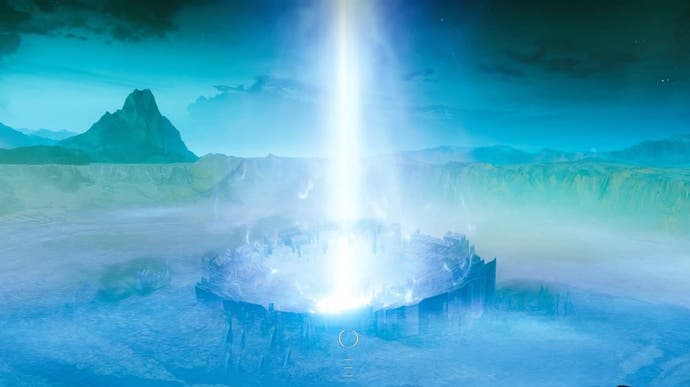Two days with Forsaken suggests Destiny 2 is back on track
Ace of spades.
In the run up to the release of Forsaken, Destiny 2's latest expansion, developers at Bungie said they hoped it would do for Destiny 2 what The Taken King expansion did for Destiny 1. Well, it's early days for Forsaken, but based on what I've played so far, it may well do the trick.
It's no secret Destiny 2 has had a rough time of it. I enjoyed it at launch, but the endgame - the crucial portion of the Destiny experience designed to keep players coming back for more for months, if not years on end - fell flat, and while I played through the story of subsequent add-ons Curse of Osiris and Warmind, Destiny 2 dropped off my radar. Forsaken is designed to reignite the spark that saw millions play Destiny every day - and Bungie has, smartly I think, looked to the past for inspiration as it tries to secure the future.
So much of Forsaken takes inspiration from Destiny 1 that at times playing it feels like I'm transported back in time to 2014, farming for resources in patrol locations, clearing bounties - oh, there are so many bounties! - from the many vendors that now populate the game, and waiting around for public events. This is all stuff I am now fussing with in Forsaken - the same stuff I fussed with in Destiny 1 - and there is a welcoming familiarity to it, a curious satisfaction that comes from doing things not because they need to be done, or because you want to do them, but because if you do not, these things will be left, dangling, incomplete, like a cut in your mouth you can't help but tongue. Bounties must be completed, even if all they reward is glimmer and I have so much glimmer I can't actually gain any more.
Some will say Forsaken can be seen as an apology from Bungie to Destiny fans who found Destiny 2 lacking. In the pursuit of a broader, perhaps more casual audience, Bungie made bad decisions that meant Destiny 2 launched big but burnt out quick. Forsaken, then, is one for the hardcore, an expansion that focuses squarely on setting up a meaty endgame with staying power. We won't know just how successful that effort is until the new raid comes out and we've had more time to get stuck into the new endgame destination, the intriguing The Dreaming City, but what I can say is that the journey to get there is a blast.
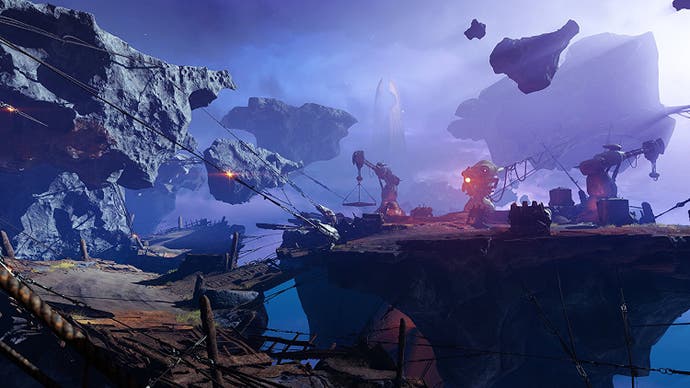
The journey begins with the death of Cayde-6, Destiny's wise-cracking sharp-shooting robot, at the hands of Uldren Sov, Destiny's resident douchebag who was last seen screaming into space during a space battle with The Taken King. Bungie signalled Cayde's death as part of the marketing campaign for Forsaken, presumably to catch the eye of lapsed Destiny fans, so to watch it play it out at the beginning of Forsaken's story, to fight alongside a dead man - er, robot - walking who's oblivious to the fact he's a dead man - er, robot - walking is pretty odd. I think Bungie hoped players would feel crushed by Cayde's death, but for me, given we've known it was coming for a few months and even who dunnit, I just wanted to get the whole thing over with so I could get on with the good stuff. I wish Bungie had kept the whole thing a secret so Cayde's death came as a shock. Needs must, I guess.
In any case, the Barons steal the show from the annoying Uldren, pretty much from the outset. Cayde bites the dust as he tries desperately to contain a prison break at the Prison of Elders, the enormous jail housed in Destiny's cool purple-drenched gaggle of rocks and machines collectively known as the Reef. Here you encounter the Scorn - a new group of enemies that are, essentially, undead Fallen with a fire theme. I think the Scorn are more interesting that the Taken, although they are just riffs on enemy AI we've killed a million times in Destiny before. Highlights include the Ravager, who charges at you with a fiery cauldron, the Wraith, who spins flame torches, the Raider, who teleports around leaving a cool blue effect in its wake, the Lurker, which shoots a pistol from behind a shield (I like the sound your bullets make as they clang off these shields), and the Abomination, which is a massive, ogre-like enemies that shoots lightning. In truth, fighting the Scorn can feel like playing Destiny on auto-pilot. There's nothing groundbreaking going on here when it comes to the rank and file. Further up the chain, though, the Scorn get pretty interesting.
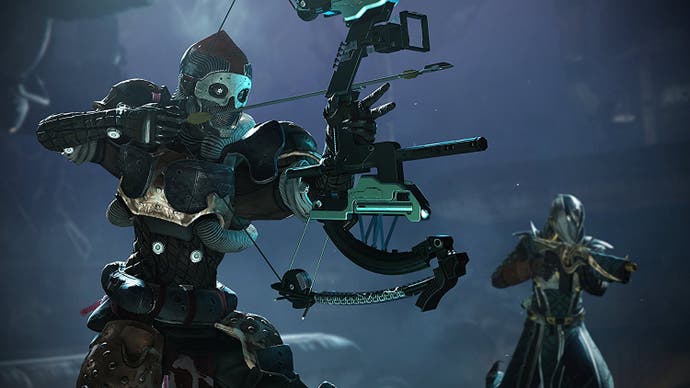
Up the chain is where the Barons come in. I feel confident in saying the Barons are some of the most enjoyable boss fights I've had in Destiny. Each Baron must be defeated before you can get to their leader, Fikrul, the Fanatic, and his "father", Uldren, and each fight is a suitably different experience with a cool gimmick set in a heavily-detailed, unique arena. One Baron fight is a frantic chase against a gang of pike riders. There's a tank level (I love it when Bungie does tank levels). The Mindbender is obsessed with the Hive and has perhaps taken this obsession too far. The Trickster turns ammo into traps. The Mad Bomber charges you with defusing splinter mines as you fight. The Rifleman creates copies of himself to confuse you with. And the Hangman, my favourite, has captured - and tortured - Fallen servitors, which you must rescue (one of the highlights of Forsaken is fighting alongside a couple of spiky servitors). Most of these Barons speak your language, which really adds to their personalities. Generally, the dialogue and voice acting in Forsaken is a significant step up for Destiny 2. I don't want to over-egg things here. The dialogue is still mostly silly and nonsensical. But at least I'm not cringing at every spoken line, like I've tended to at Destiny over the years. The Spider, your Fallen ally who wants control of the Tangled Shore, is wonderfully-realised, with a gruff almost cockney gangster vibe to him. But the Barons' dialogue sticks in the mind. There's a super cool Mad Max, steampunk-esque feel to the Barons and the Scorn generally, which I love. Forsaken feels like Destiny getting its hands dirty. There's even a hint of Lovecraft.
Forsaken is setup as a fairly straight story of revenge, but really it's about the fine line between the Light and the Darkness, the Destiny universe's two overarching forces. As you kill the Barons, characters in the game suggest you're perhaps revelling in the hunt. The Barons pick up on this, as does the Spider and poor old Commander Zavala, who twiddles his thumbs back at the Tower. Even your Nolan North-voiced ghost starts to worry about you. Destiny isn't all of a sudden the master of storytelling. And I admit a lot of the wider story in Forsaken will come across as gobbledygook to all but the most devoted of Destiny lore nerds, but for those of us who care, the expansion touches on interesting themes that prompt interesting questions: are the Guardians a force for good in the universe? Is the Traveler versus the Darkness really as black or white a conflict as we think? And, who's side are we on, really?
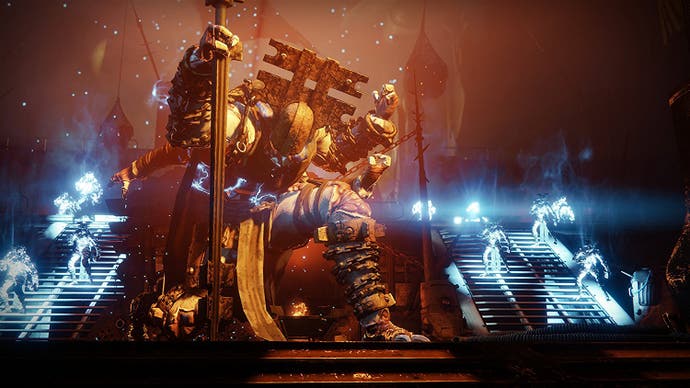
Forsaken's tone is certainly more serious than that of the light-hearted, almost slapstick Destiny 2. The hunt is at all times a serious business - no chickens on heads here - and at one point we get what I think is Destiny's first ever swear (I won't spoil the surprise, so let's just say Ikora Rey is pretty pissed off at Uldren). But underneath the tone is a welcome return to the mystery and weirdness of the Destiny universe. Lore is now in-game via the new triumph system (grimoire cards are a tab in the menu), and a lot of it signals the arrival of the long-awaited Darkness and the origin of the Awoken. It's about time!
When you finish the Forsaken campaign, you'll be in or around light level 500, the new Destiny 2 soft level cap. At this point the game opens up and the inevitable grind begins. I've yet to dig into the Dreaming City, which I have just unlocked entry to, but even outside of that there's an initially bewildering amount of activities to try your hand at. Lost Sectors in the Tangled Shore are an obvious and fun start. Some of the environments these side quests take you to are brilliant. One is what appears to be a Fallen nightclub. Yes, a Fallen nightclub, complete with a DJ who's playing... the Paul McCartney Destiny song. Bungie still has a sense of humour, it seems.
There are more bounties in Forsaken than you can carry, it seems. And more challenges, pursuits and quests to get stuck into than you initially know what to do with. The good news is most of the main activities reward you with powerful gear, so at launch at least, Forsaken makes Destiny 2 more respectful of your time. Many of the post-campaign activities are more about making your character's numbers go up than they are about playing super cool content, although Crucible is a fast and fun time right now following recent changes and Gambit, which I'll get onto later, is hard to put down. The Destiny grind, I suspect, is back with a vengeance, but with so much to be getting on with and the Dreaming City waiting to be explored, I finally have a spring in my step to go along with my triple jump.
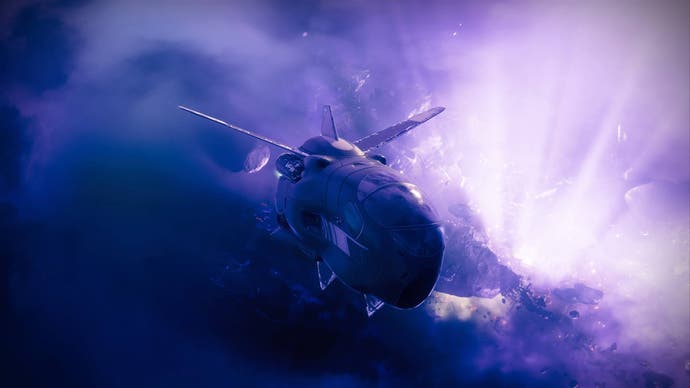
And then there's Gambit, the best new game mode to hit Destiny in years. Gambit is a player versus environment versus player mode run by the mysterious Drifter, the new character who some believe is towing a rock hauled from a planet home to the Darkness creatures. Gambit sees two teams of four fight against waves of enemies in their own areas in order to bank motes of light. Bank enough motes of light and you'll summon a boss. The first team to kill the boss wins the round, and it's best of three.
The brilliance of Gambit is that you can invade the other team's area - and they can invade your area. Thankfully, this happens periodically and only one player can invade at a time, so you're not faced with a relentless wave of enemy players. Invading and taking down the entire enemy team is one of the most thrilling things you can do in competitive Destiny 2 right now. I've only managed it a couple of times, but each time my heart was pumping and I teleported back to my team's area like a legend. Amazing stuff.
Gambit is not without its problems, though. Most of my matches so far have been close, but if you end up being stomped on by the enemy, seeing the match out can feel like a trudge. And I've seen quite a few teammates camp the portal rather than play for the team, which is annoying. I think this problem is exacerbated at launch by a post-campaign exotic quest that contains misleading guidance text. (Rather than having to invade the other team and score kills with a hand cannon, which the text suggests, you have to kill the player who invades your area with a hand cannon.) I expect - well, hope - this issue sorts itself out over the coming weeks.
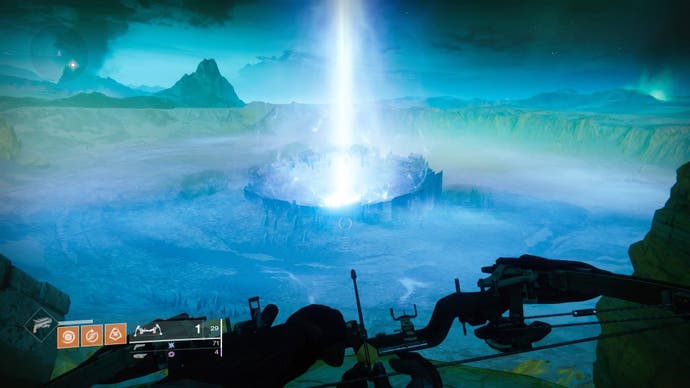
While I'm enjoying Forsaken, I have some concerns. The return of the pursuit of "god roll" weapons and armour is going down well with the hardcore as it extends the endgame, but I've always felt a tad uneasy about this system. Re-rolling weapons over and over again always felt a little like playing a fruit machine to me, and wasn't particularly fun. Surprisingly, the music in Forsaken isn't great. I say this is surprising because one thing Destiny's always had is great music. Forsaken's music just washed over me, and I can't remember a moment where it made the action feel particularly epic. Even the solemn music that plays post Cayde's death is a little limp. I'm seeing significant frame-rate drops more often than ever before with Destiny (I'm playing on a goold old-fashioned PlayStation 4). And I'm a little worried about the new weapons. So far I haven't had a single one that's made much of an impact on me, but then I don't have a new exotic yet.
So far, though, so good. Even at this early stage, Forsaken is a marked improvement of the Destiny 2 experience. It's a reset, really, taking lots of what people loved about Destiny 1 and adding cool new experiences, such as Gambit. All this is underpinned by the wonderful gunplay Destiny has always had. I'm not sure Forsaken will revive Destiny 2's fortunes, but it's off to a great start, and I can't wait to play more.
It's been a long time since I've said that.
